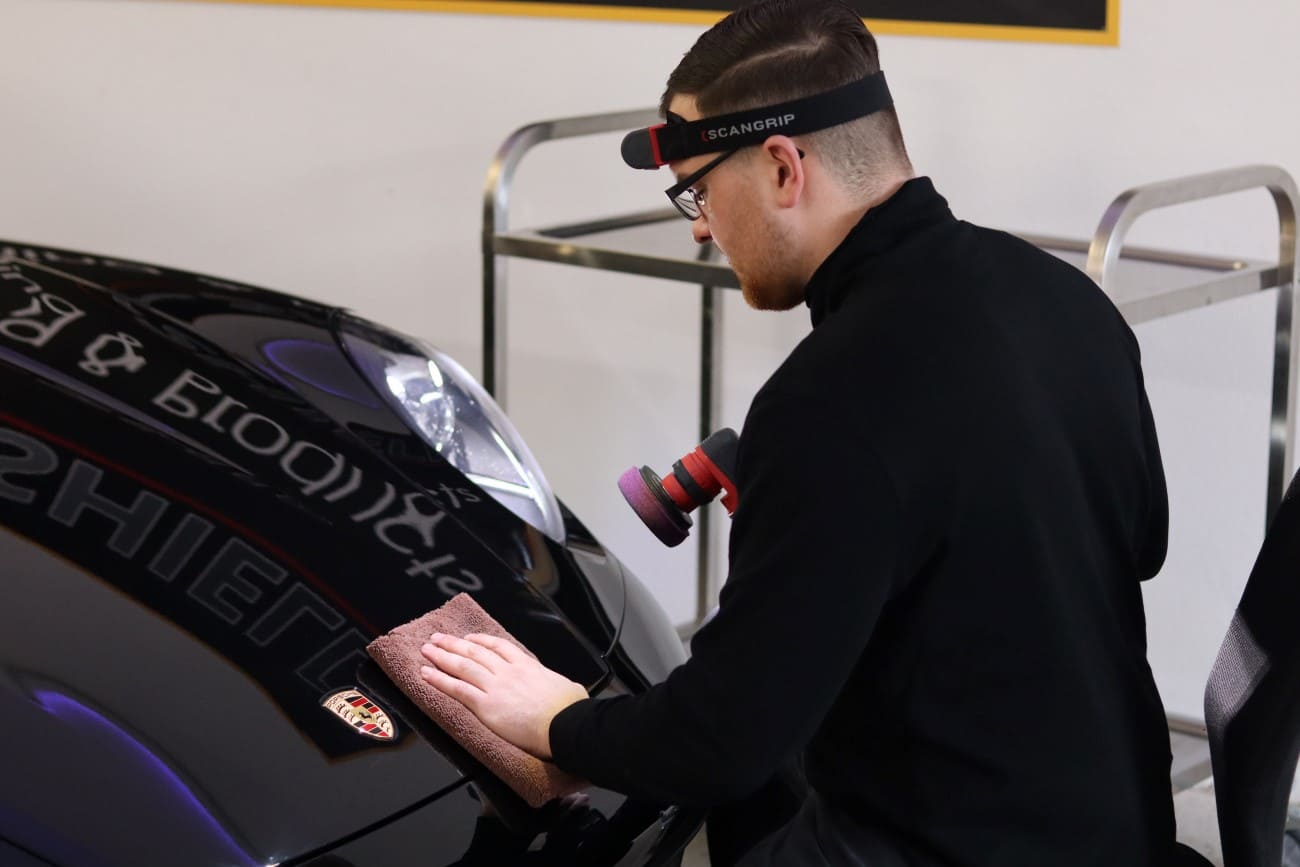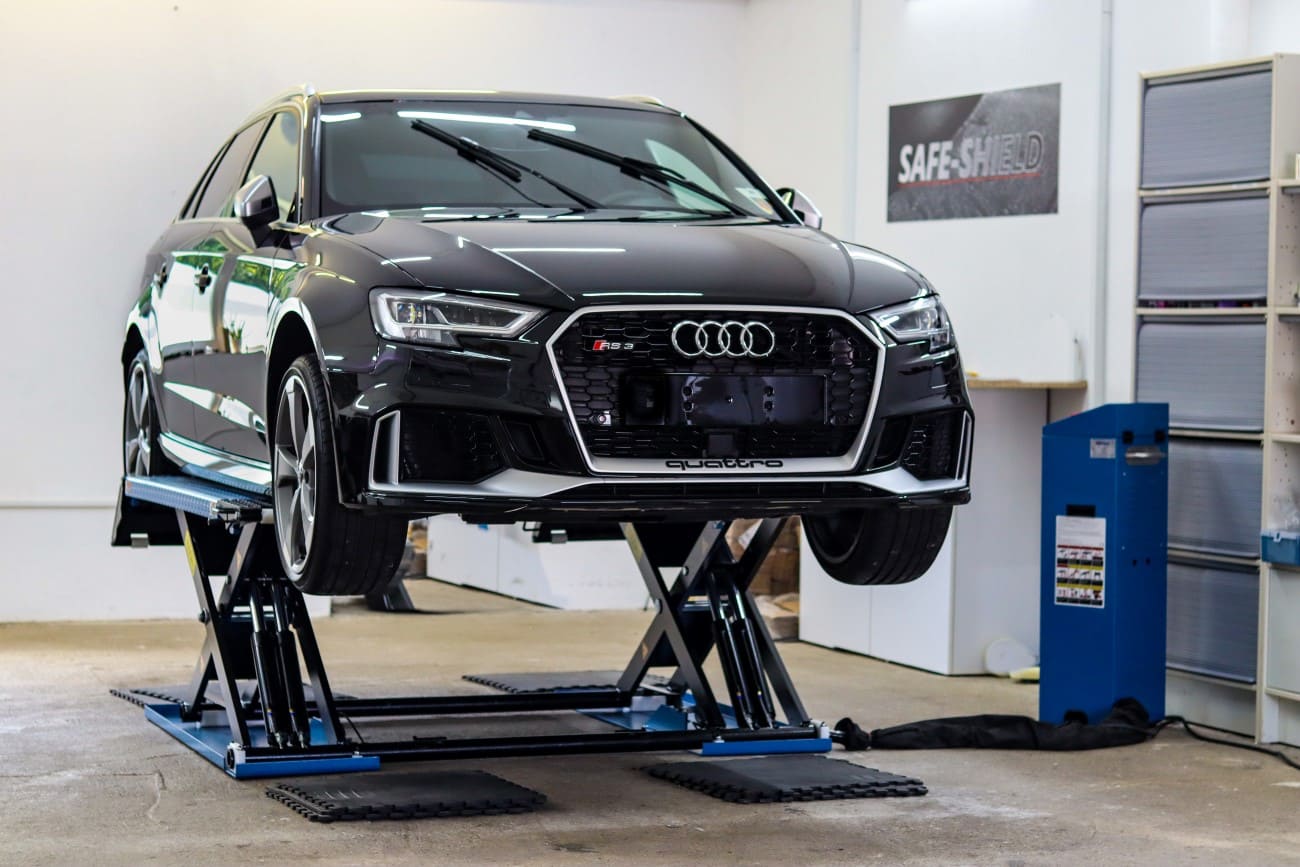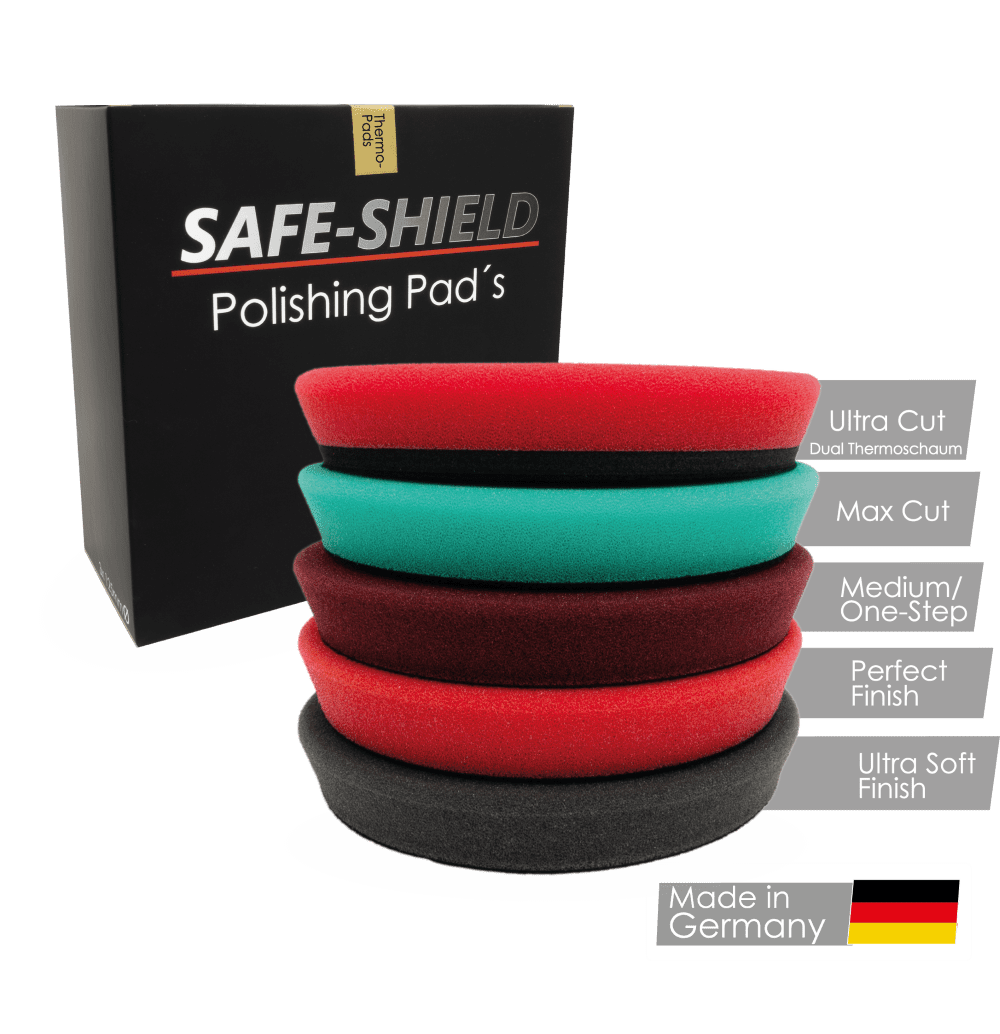Show table of contents
Basics of car polishing and paint careFactors that influence how often polishing is needed
Recommended Polishing Intervals
Proper techniques for polishing
Long-term paint protection through polishing
Common mistakes and problems when polishing
Professional vs. DIY polishing
Conclusion: Optimal care for long-lasting paint protection
How often should I polish my car to protect the paint?
To keep your car looking as new and perfect as possible for as long as possible, regular care is essential. It’s also important that the care is done correctly.
An important question is how often you should polish your car to benefit the paint without causing harm. We answer this and other questions about car polish and paint care in this article.
Basics of car polishing and paint care
Polishing is done after a thorough car wash. It’s important that the car is really clean before you polish the paint. However, you shouldn’t polish after every wash, as each polish removes a small layer of protective clear coat.
You can either polish your car yourself or have a professional detailing service do it for you. Both options have their pros and cons.
Importance of regular paint maintenance
Regular paint care is important because the paint significantly affects the car’s appearance. Additionally, polishing, when necessary, helps maintain the car’s value and can lead to a higher resale price.
Car paint also protects the metal underneath from moisture. If the paint is damaged, the metal can eventually rust. External factors like stone chips, road salt, insects, tree sap, and weather can wear down the top layer of paint over time if not cared for.
This can be corrected during polishing. Polishing products contain tiny abrasive particles that remove the top, dull paint layer and any scratches, restoring the paint’s shine and bringing it back to its best condition.
Difference between polishing and waxing
There are several important differences between polishing and waxing. Polishing is done before waxing (!) to smooth the surface and remove the top layer of paint—as preparation for car wax or a sealant.
When waxing or sealing, a thin protective layer is applied to the paint. In fact, you can wax a car without polishing it first, but the paint should already be in good condition. However, cleaning beforehand is necessary in both cases.
Factors that influence how often polishing is needed
In addition to how often you use your vehicle and environmental factors, the paint’s condition and the car’s age also affect how often you should polish your car.
Vehicle use and environmental influences
The more often you use your vehicle, the more the paint deteriorates, since it’s exposed more frequently to harsh environmental effects like bad weather, intense sun, bird droppings, road salt, or insects.
Paint condition and vehicle age
If the paint is already in poor condition—because the vehicle is very old or prone to damage—it should be polished more often to maintain its shine. Older cars often have very soft single-stage paints, which are more sensitive than modern two-stage systems and usually require more care.
Still, you shouldn’t overdo polishing, or you could completely wear away the remaining layer of paint.
Recommended Polishing Intervals
Depending on whether you use your car daily or keep it mostly in the garage because it’s a sports car or classic, you should polish the paint more or less often.
Guidelines for everyday vehicles
How often everyday vehicles should be polished can’t be answered with a blanket statement, since it depends on what external factors the car is exposed to and how often it’s used.
When you take a closer look at the paint, you should be able to tell if it needs to be polished again or not. As a rule of thumb for regular cars, the paint should not be polished more than twice a year.
Special Recommendations for Sports Cars and Classic Cars
Since classic cars and sports cars are generally driven less often and not parked on the street overnight, they need to be polished much less frequently than daily drivers.
Depending on how often the car is used, polishing is recommended every one and a half to two years.
Proper techniques for polishing
Proper polishing is a skill! Otherwise, you’ll end up causing even more scratches in the paint instead of removing them. There are quite a few things you can do wrong.
Preparing the vehicle
Before you polish your car, it needs to be freshly washed. Remove all visible and coarse dirt. You should also park your car in a shady spot, or even better, in a garage or indoors, because in the sun you’ll not only be sweating in no time, but the polish can also dry out quickly.
Step-by-step guide to polishing
Once you’ve chosen the right polish, tape off all visible plastic parts as a precaution to avoid accidentally polishing them. Polishing plastic can cause unsightly streaks.
You then work in the polish either by hand with a special pad or, ideally, with a machine. The polished-off residue is removed with a microfiber polishing cloth.
Using a polishing machine saves you a lot of effort. Plus, the results are almost always better. For beginners, a dual-action (DA) polisher is especially recommended.
Choosing the right polishing products
Choosing the right polish is also important. Depending on the product, the abrasives can be fine or coarse. Not every polish is suitable for every type of paint.
Polishes for different types of paint
For new vehicles and minimally weathered paint, a finish polish is suitable—these are polishes with a very low abrasive content. If your paint is extremely weathered, you should first use a cutting compound to effectively remove the top layer, then follow up with a finish polish for a high-gloss shine.
If your paint is neither in great condition nor heavily weathered, the best choice is a one-step polish. This easily removes light scratches and already produces a strong shine. You can achieve excellent results in a single polishing pass.
Natural vs. Synthetic “Sealant Polishes”
Some polishes already contain sealant or wax components. Natural and synthetic polishes for cars differ in their origin and composition. Natural polishes use organic substances like carnauba wax, which is derived from plants.
Synthetic polishes, on the other hand, often contain polymer compounds that are chemically manufactured. These typically provide longer-lasting smoothness and can be specifically tailored to certain types of paint.
Long-term paint protection through polishing
With proper polishing and sealing, the paint can be protected long-term. Polishing ensures the paint retains its shine and stays smooth. When the paint is in good condition, environmental contaminants are much less likely to stick, which significantly slows down the weathering process overall.
Role of polishing in the paint care cycle
Polishing plays an important role in the paint care cycle and, after regular washing, is a key part of car maintenance. Regular washing is most important, as it prevents dirt like bird droppings from damaging the paint.
Additional protective measures after polishing
After polishing, you have several options for preserving the finish: You can protect it with a thin layer of wax. You can use a polymer sealant, like the one included in our Quick Detailer. Or you can provide long-term protection with a graphene or ceramic coating.
Common mistakes and problems when polishing
As previously mentioned, there are also a few things you can do wrong when polishing.
Avoid over-polishing
Polishing too often can damage the paint and is therefore counterproductive, as each polish removes a thin layer of paint. If you polish too frequently, you’ll eventually remove the entire clear coat.
Handling Sensitive Paint Surfaces
Sensitive paint surfaces should be polished with extra care and ideally only if you have some experience. The risk of creating 'holograms' is especially high on softer black paints. These holograms don't look good in sunlight and are difficult to remove. A quick tip: Our Ultra-Soft Polishing Pads are particularly well-suited for delicate paint surfaces and, when used correctly, virtually eliminate hologram formation.
Professional vs. DIY polishing
Whether professional or DIY polishing makes sense depends on your level of experience and knowledge, as well as whether you have the necessary materials.
When does professional polishing make sense?
If you’re not very experienced and your paint is particularly challenging, you should invest in a professional polish, as detailing professionals simply have more experience and better tools. They also work indoors, sheltered from the weather, in a warm environment.
Tips for effective DIY polishing
For effective DIY polishing, make sure you use the right polish, have high-quality polishing pads on hand, and approach the process carefully. Our tip: If it’s your first time polishing, start with a simple one-step or finishing polish just to achieve a nice shine. Multi-stage polishing systems—first compounding, then finishing—are more suitable for advanced users.
Conclusion: Optimal care for long-lasting paint protection
In general, it’s recommended to polish your car once or at most twice a year. Whether a DIY polish is suitable or if you should use a professional service depends on your skills and resources.
Summary of best practices
- Thoroughly wash the car and paint beforehand as part of a car wash
- Use a clean polishing pad with a polish suitable for your paint.
- Do not polish too often
- After polishing, the paint can be either waxed or sealed, as desired.
Customizing Polishing Intervals
Depending on the age and condition of the paint, it might make sense to adjust polishing intervals individually. The better the paint, the less often it needs polishing, and vice versa.




Leave a comment
All comments are moderated before being published.
This site is protected by hCaptcha and the hCaptcha Privacy Policy and Terms of Service apply.